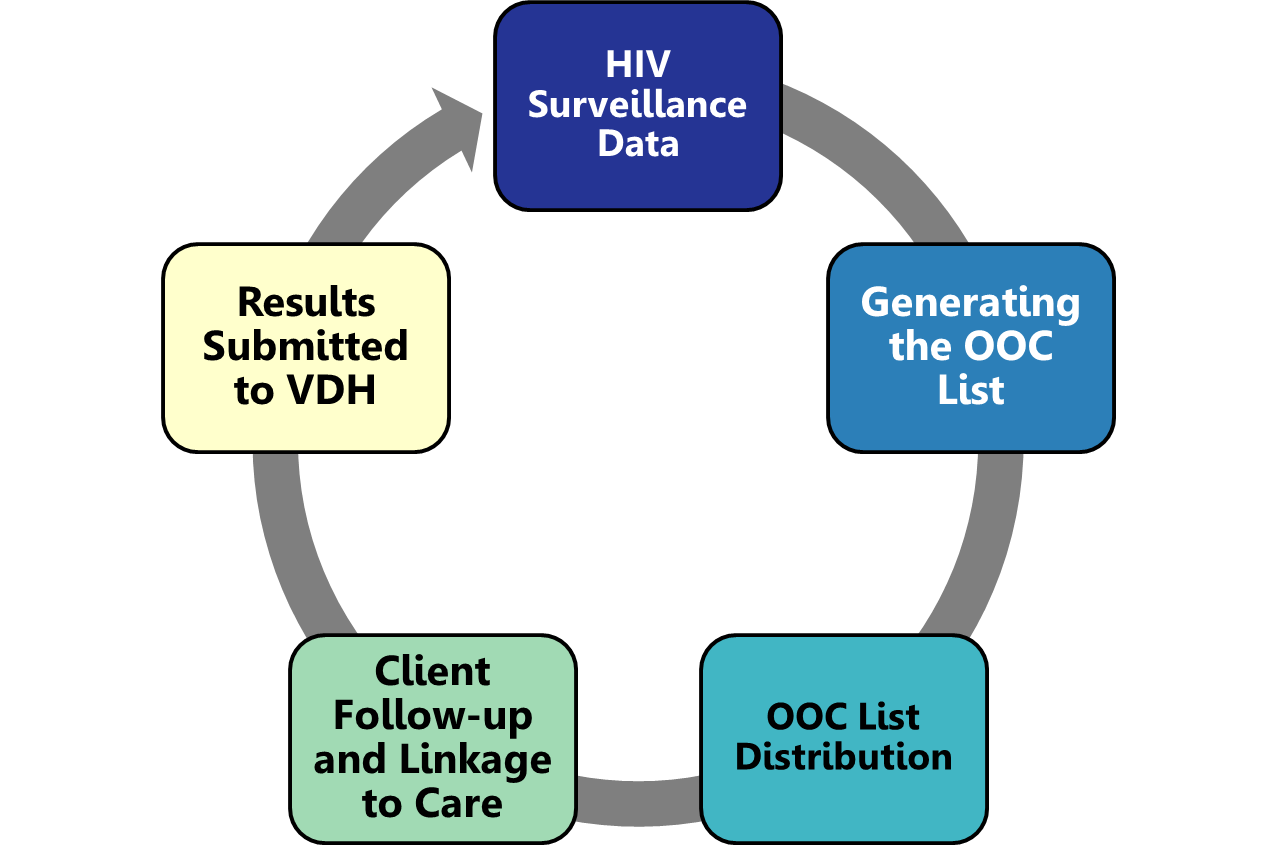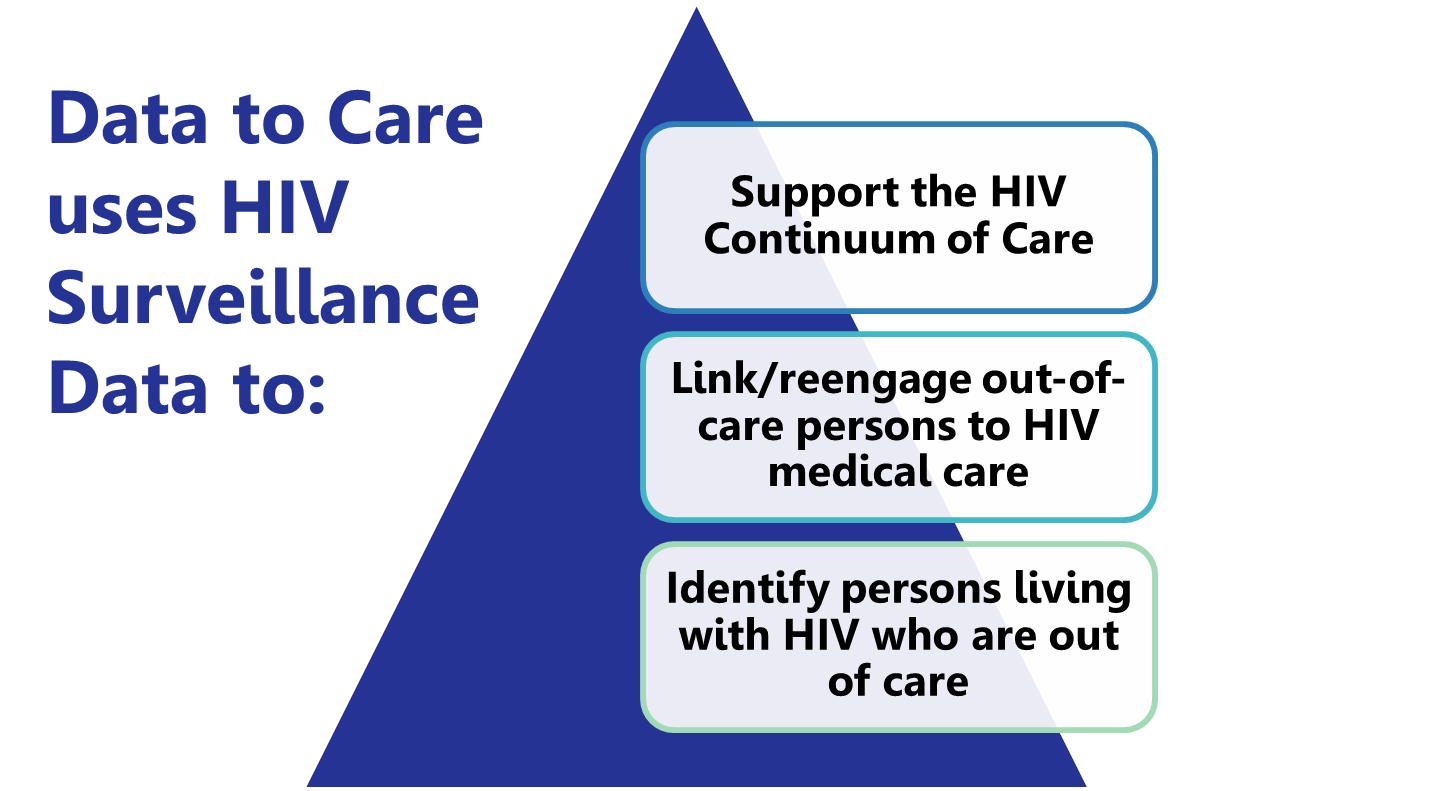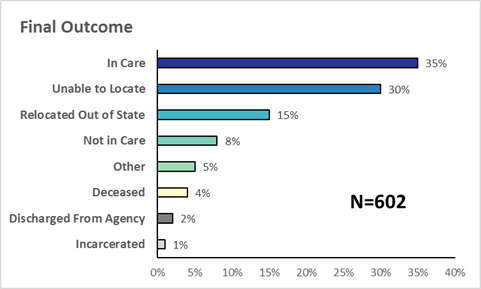What is Data to Care?
- A joint initiative with HIV Surveillance, Prevention, Care Services and STD Prevention and Surveillance
- Goals
- To improve health outcomes for persons living with HIV by helping clients to:
- Be in care (engaged)
- Stay in continuous HIV care (retention)
- Have a viral load less than 200 copies/mL (viral suppression)
- Prevent new HIV infection
- To improve health outcomes for persons living with HIV by helping clients to:
- Data to Care has expanded statewide to over 40 local health departments, medical sites, and community-based organizations
How Does Data to Care Work?
- Virginia HIV surveillance data is used to create out-of-care lists
- Out-of-care lists are distributed
- Agencies follow up with out-of-care clients to find out if clients are truly out-of-care
- Agencies enter results into REDCap
- The results are entered back into the HIV surveillance system to update the data
The Data to Care Process

To be on an Out-of-Care list, clients must be:
- HIV-positive and reported to Virginia’s HIV Surveillance data system
- 18 years of age or older
- Living with a last known address in Virginia
- Meet the out-of-care definition
Current Out-of-Care Definition
- Clients who have not had a care marker within one year or more from the date the out-of-care list was created, but had a care marker in the preceding calendar year

Overall Results
- As of August 2018, results for 602 Data to Care clients have been submitted
- Thirty-five percent of these were found to be “In Care”
- Of the 8% of clients found “Not in Care”, 68% reengaged into HIV care through Data to Care efforts
Data reported to the Virginia Department of Health as of September 2018
What are the Results Being Used For?
- To identify out-of-care clients who need to be linked or reengaged back into HIV care
- Identify data reporting issues
- To update Virginia’s HIV Surveillance data
- Help improve future out-of-care lists
Resources:
Additional Information:
For any additional information or if your agency is interested in participating in Data to Care, please Contact Us.
Last Updated: July 30, 2024


